Fibrin sealants for the prevention of postoperative pancreatic fistula following pancreatic surgery
- PMID: 37335216
- PMCID: PMC10291948
- DOI: 10.1002/14651858.CD009621.pub5
Fibrin sealants for the prevention of postoperative pancreatic fistula following pancreatic surgery
Abstract
Background: Postoperative pancreatic fistula (POPF) is one of the most frequent and potentially life-threatening complications following pancreatic surgery. Fibrin sealants have been used in some centres to reduce POPF rate. However, the use of fibrin sealant during pancreatic surgery is controversial. This is an update of a Cochrane Review last published in 2020.
Objectives: To evaluate the benefits and harms of fibrin sealant use for the prevention of POPF (grade B or C) in people undergoing pancreatic surgery compared to no fibrin sealant use.
Search methods: We searched CENTRAL, MEDLINE, Embase, two other databases, and five trials registers on 09 March 2023, together with reference checking, citation searching, and contacting study authors to identify additional studies.
Selection criteria: We included all randomised controlled trials (RCTs) that compared fibrin sealant (fibrin glue or fibrin sealant patch) versus control (no fibrin sealant or placebo) in people undergoing pancreatic surgery.
Data collection and analysis: We used standard methodological procedures expected by Cochrane.
Main results: We included 14 RCTs, randomising 1989 participants, comparing fibrin sealant use versus no fibrin sealant use for different locations: stump closure reinforcement (eight trials), pancreatic anastomosis reinforcement (five trials), or main pancreatic duct occlusion (two trials). Six RCTs were carried out in single centres; two in dual centres; and six in multiple centres. One RCT was conducted in Australia; one in Austria; two in France; three in Italy; one in Japan; two in the Netherlands; two in South Korea; and two in the USA. The mean age of the participants ranged from 50.0 years to 66.5 years. All RCTs were at high risk of bias. Application of fibrin sealants to pancreatic stump closure reinforcement after distal pancreatectomy We included eight RCTs involving 1119 participants: 559 were randomised to the fibrin sealant group and 560 to the control group after distal pancreatectomy. Fibrin sealant use may result in little to no difference in the rate of POPF (risk ratio (RR) 0.94, 95% confidence interval (CI) 0.73 to 1.21; 5 studies, 1002 participants; low-certainty evidence) and overall postoperative morbidity (RR 1.20, 95% CI 0.98 to 1.48; 4 studies, 893 participants; low-certainty evidence). After fibrin sealant use, approximately 199 people (155 to 256 people) out of 1000 developed POPF compared with 212 people out of 1000 when no fibrin sealant was used. The evidence is very uncertain about the effect of fibrin sealant use on postoperative mortality (Peto odds ratio (OR) 0.39, 95% CI 0.12 to 1.29; 7 studies, 1051 participants; very low-certainty evidence) and total length of hospital stay (mean difference (MD) 0.99 days, 95% CI -1.83 to 3.82; 2 studies, 371 participants; very low-certainty evidence). Fibrin sealant use may reduce the reoperation rate slightly (RR 0.40, 95% CI 0.18 to 0.90; 3 studies, 623 participants; low-certainty evidence). Serious adverse events were reported in five studies (732 participants), and there were no serious adverse events related to fibrin sealant use (low-certainty evidence). The studies did not report quality of life or cost-effectiveness. Application of fibrin sealants to pancreatic anastomosis reinforcement after pancreaticoduodenectomy We included five RCTs involving 519 participants: 248 were randomised to the fibrin sealant group and 271 to the control group after pancreaticoduodenectomy. The evidence is very uncertain about the effect of fibrin sealant use on the rate of POPF (RR 1.34, 95% CI 0.72 to 2.48; 3 studies, 323 participants; very low-certainty evidence), postoperative mortality (Peto OR 0.24, 95% CI 0.05 to 1.06; 5 studies, 517 participants; very low-certainty evidence), reoperation rate (RR 0.74, 95% CI 0.33 to 1.66; 3 studies, 323 participants; very low-certainty evidence), and total hospital cost (MD -1489.00 US dollars, 95% CI -3256.08 to 278.08; 1 study, 124 participants; very low-certainty evidence). After fibrin sealant use, approximately 130 people (70 to 240 people) out of 1000 developed POPF compared with 97 people out of 1000 when no fibrin sealant was used. Fibrin sealant use may result in little to no difference both in overall postoperative morbidity (RR 1.02, 95% CI 0.87 to 1.19; 4 studies, 447 participants; low-certainty evidence) and in total length of hospital stay (MD -0.33 days, 95% CI -2.30 to 1.63; 4 studies, 447 participants; low-certainty evidence). Serious adverse events were reported in two studies (194 participants), and there were no serious adverse events related to fibrin sealant use (very low-certainty evidence). The studies did not report quality of life. Application of fibrin sealants to pancreatic duct occlusion after pancreaticoduodenectomy We included two RCTs involving 351 participants: 188 were randomised to the fibrin sealant group and 163 to the control group after pancreaticoduodenectomy. The evidence is very uncertain about the effect of fibrin sealant use on postoperative mortality (Peto OR 1.41, 95% CI 0.63 to 3.13; 2 studies, 351 participants; very low-certainty evidence), overall postoperative morbidity (RR 1.16, 95% CI 0.67 to 2.02; 2 studies, 351 participants; very low-certainty evidence), and reoperation rate (RR 0.85, 95% CI 0.52 to 1.41; 2 studies, 351 participants; very low-certainty evidence). Fibrin sealant use may result in little to no difference in the total length of hospital stay (median 16 to 17 days versus 17 days; 2 studies, 351 participants; low-certainty evidence). Serious adverse events were reported in one study (169 participants; low-certainty evidence): more participants developed diabetes mellitus when fibrin sealants were applied to pancreatic duct occlusion, both at three months' follow-up (33.7% fibrin sealant group versus 10.8% control group; 29 participants versus 9 participants) and 12 months' follow-up (33.7% fibrin sealant group versus 14.5% control group; 29 participants versus 12 participants). The studies did not report POPF, quality of life, or cost-effectiveness.
Authors' conclusions: Based on the current available evidence, fibrin sealant use may result in little to no difference in the rate of POPF in people undergoing distal pancreatectomy. The evidence is very uncertain about the effect of fibrin sealant use on the rate of POPF in people undergoing pancreaticoduodenectomy. The effect of fibrin sealant use on postoperative mortality is uncertain in people undergoing either distal pancreatectomy or pancreaticoduodenectomy.
Copyright © 2023 The Cochrane Collaboration. Published by John Wiley & Sons, Ltd.
Conflict of interest statement
ML has declared that they have no conflict of interest.
SZ has declared that they have no conflict of interest.
SH has declared that they have no conflict of interest.
YC has declared that they have no conflict of interest.
NC has declared that they have no conflict of interest.
YD has declared that they have no conflict of interest.
XD has declared that they have no conflict of interest.
Figures
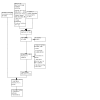
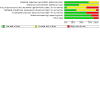
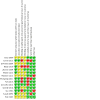
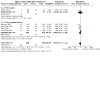
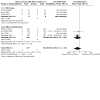
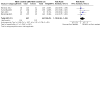
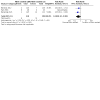
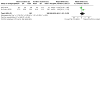
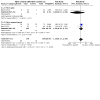

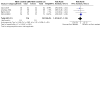

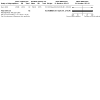
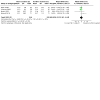
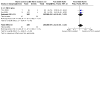
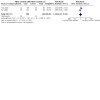
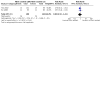

Update of
-
Fibrin sealants for the prevention of postoperative pancreatic fistula following pancreatic surgery.Cochrane Database Syst Rev. 2020 Mar 11;3(3):CD009621. doi: 10.1002/14651858.CD009621.pub4. Cochrane Database Syst Rev. 2020. Update in: Cochrane Database Syst Rev. 2023 Jun 19;6:CD009621. doi: 10.1002/14651858.CD009621.pub5. PMID: 32157697 Free PMC article. Updated.
References
References to studies included in this review
Bassi 1999 {published data only}
-
- Bassi C, Butturini G, Falconi M, Salvia RN, Caldiron E, Talamini G, et al. Prospective randomised pilot study of management of the pancreatic stump following distal resection. HPB: Official Journal of the International Hepato Pancreato Biliary Association 1999;1(4):203-7.
Carter 2013 {published data only}
-
- Carter TI, Fong ZV, Hyslop T, Lavu H, Tan WP, Hardacre J, et al. A dual-institution randomized controlled trial of remnant closure after distal pancreatectomy: does the addition of a falciform patch and fibrin glue improve outcomes? Journal of Gastrointestinal Surgery 2013;17(1):102-9. [DOI: 10.1007/s11605-012-1963-x] - DOI - PubMed
D'Andrea 1994 {published data only}
-
- D'Andrea AA, Costantino V, Sperti C, Pedrazzoli S. Human fibrin sealant in pancreatic surgery: it is useful in preventing fistulas? A prospective randomized study. Italian Journal of Gastroenterology 1994;26(6):283-6. - PubMed
Kwon 2019 {published data only}
-
- Kwon J, Shin SH, Lee S, Park G, Park Y, Lee SJ, et al. The effect of fibrinogen/thrombin-coated collagen patch (TachoSil(®)) application in pancreaticojejunostomy for prevention of pancreatic fistula after pancreaticoduodenectomy: a randomized clinical trial. World Journal of Surgery 2019;43(12):3128-37. [DOI: 10.1007/s00268-019-05172-y] - DOI - PubMed
Lillemoe 2004 {published data only}
-
- Lillemoe KD, Cameron JL, Kim MP, Campbell KA, Sauter PK, Coleman JA, et al. Does fibrin glue sealant decrease the rate of pancreatic fistula after pancreaticoduodenectomy? Results of a prospective randomized trial. Journal of Gastrointestinal Surgery 2004;8(7):772-4. [10.1016/j.gassur.2004.06.011] - PubMed
Martin 2013 {published data only}
Montorsi 2012 {published data only}
Mungroop 2021 {published data only}
-
- Mungroop TH, Heijde N, Busch OR, Hingh IH, Scheepers JJ, Dijkgraaf MG, et al. Randomized clinical trial and meta-analysis of the impact of a fibrin sealant patch on pancreatic fistula after distal pancreatectomy: CPR trial. BJS Open 2021;5(3):zrab001. [DOI: 10.1093/bjsopen/zrab001] - DOI - PMC - PubMed
Park 2016 {published data only}
-
- Park JS, Lee DH, Jang JY, Han Y, Yoon DS, Kim JK, et al. Use of TachoSil(®) patches to prevent pancreatic leaks after distal pancreatectomy: a prospective, multicenter, randomized controlled study. Journal of Hepato-Biliary-Pancreatic Sciences 2016;23(2):110-7. [DOI: 10.1002/jhbp.310] - DOI - PubMed
Sa Cunha 2015 {published data only}
-
- Sa Cunha A, Carrere N, Meunier B, Fabre JM, Sauvanet A, Pessaux P, et al. Stump closure reinforcement with absorbable fibrin collagen sealant sponge (TachoSil) does not prevent pancreatic fistula after distal pancreatectomy: the FIABLE multicenter controlled randomized study. American Journal of Surgery 2015;210(4):739-48. [DOI: 10.1016/j.amjsurg.2015.04.015] - DOI - PubMed
Schindl 2018 {published and unpublished data}
Suc 2003 {published data only}
-
- Suc B, Msika S, Fingerhut A, Fourtanier G, Hay JM, Holmières F, et al. Temporary fibrin glue occlusion of the main pancreatic duct in the prevention of intra-abdominal complications after pancreatic resection: prospective randomized trial. Annals of Surgery 2003;237(1):57-65. [DOI: 10.1097/00000658-200301000-00009] - DOI - PMC - PubMed
Suzuki 1995 {published data only}
References to studies excluded from this review
Bubis 2022 {published data only}
-
- Bubis LD, Behman R, Roke R, Serrano PE, Khalil JA, Coburn NG, et al. PATCH-DP: a single-arm phase II trial of intra-operative application of HEMOPATCH™ to the pancreatic stump to prevent post-operative pancreatic fistula following distal pancreatectomy. HPB: Official Journal of the International Hepato-Pancreato-Biliary Association 2022;24(1):72-8. [DOI: 10.1016/j.hpb.2021.05.007] - DOI - PubMed
Gaspar 2021 {published data only}
-
- Gaspar AF, Kemp R, Sankarankutty AK, Júnior JR, Filho JA, Martone D, et al. Clinical outcomes and costs of the use of fibrin sealant in pancreaticojejunal anastomosis after pancreaticoduodenectomy: a retrospective analysis study. Annals of Medicine and Surgery 2021;67:102531. [DOI: 10.1016/j.amsu.2021.102531] - DOI - PMC - PubMed
Luu 2019 {published data only}
-
- Luu AM, Braumann C, Uhl W, Janot-Matuschek M, Herzog T. Does autologous fibrin sealant (vivostat©) reduce the incidence of postoperative pancreatic fistula after distal pancreatectomy? A matched pairs analysis. Acta Chirurgica Belgica 2019;8(30):1-7. [DOI: 10.1080/00015458.2019.1658354] - DOI - PubMed
Mazzaferro 2019 {published data only}
-
- Mazzaferro V, Virdis M, Sposito C, Cotsoglou C, Droz Dit Busset M, Bongini M, et al. Permanent pancreatic duct occlusion with neoprene-based glue injection after pancreatoduodenectomy at high risk of pancreatic fistula: a prospective clinical study. Annals of Surgery 2019;270(5):791-8. [DOI: 10.1097/SLA.0000000000003514] - DOI - PMC - PubMed
Mita 2015 {published data only}
-
- Mita K, Ito H, Murabayashi R, Asakawa H, Nabetani M, Kamasako A, et al. Use of a fibrinogen/thrombin-based collagen fleece (TachoComb, TachoSil) with a stapled closure to prevent pancreatic fistula formation following distal pancreatectomy. Surgical Innovation 2015;22(6):601-5. [DOI: 10.1177/1553350615580649] - DOI - PubMed
Ohwada 1998 {published data only}
Park 2020 {published data only}
-
- Park Y, Ko JH, Kang DR, Lee JH, Hwang DW, Lee JH, et al. Effect of flowable thrombin-containing collagen-based hemostatic matrix for preventing pancreatic fistula after pancreatectomy: a randomized clinical trial. Journal of Clinical Medicine 2020;9(10):3085. [DOI: 10.3390/jcm9103085] - DOI - PMC - PubMed
Pavlik Marangos 2011 {published data only}
Pisapia 2019 {published data only}
Privett 2021 {published data only}
-
- Privett BJ, Perini MV, Weinberg L, Fink MA, Muralidharan V, Lee E, et al. Reduction in post-operative pancreatic fistula with polyethylene glycol and recombinant human albumin sealant following stapled distal pancreatectomy. ANZ Journal of Surgery 2021;91(11):2459-65. [DOI: 10.1111/ans.17181] - DOI - PubMed
Rehman 2016 {published data only}
-
- Rehman S, Jaques BC. Does a fibrin glue sealant decrease post-operative pancreatic fistulae after pancreatoduodenectomy; a single centre comparative study in 100 consecutive patients undergoing Whipple's procedure by a single surgeon. HPB: Official Journal of the International Hepato-Pancreato-Biliary Association 2016;18:e836-7.
-
- Rehman S, Jaques BC. Does fibrin glue sealant used during pancreaticoduodenectomy reduce post-operative complication? Audit of 100 consecutive patients undergoing Whipple's procedure by a single surgeon. Journal of the Pancreas 2016;17(2):189-95.
Silvestri 2015 {published data only}
-
- Silvestri S, Franchello A, Gonella F, Deiro G, Campra D, Cassine D, et al. Role of TachoSil® in distal pancreatectomy: a single center experience. Minerva Chirurgica 2015;70(3):175-80. - PubMed
References to studies awaiting assessment
Martín 2021 {published data only}
-
- Martín MS, Cano AP, Díaz MC, López SP, Diez MG, Forcén TA, et al. Use of hemopatch as a sealant at the pancreaticojejunostomy to prevent postoperative pancreatic fistula. A randomized control trial. In: HPB: Official Journal of the International Hepato Pancreato Biliary Association. Vol. 23 (S3). 2021:S750-1. [DOI: 10.1016/j.hpb.2020.11.771] - DOI
Uranues 2021 {published data only}
-
- Uranues S, Fingerhut A, Belyaev O, Zerbi A, Boggi U, Hoffmann MW, et al. Clinical impact of stump closure reinforced with hemopatch on the prevention of clinically relevant pancreatic fistula after distal pancreatectomy: a multicenter randomized trial. Annals of Surgery Open 2021;2(1):e033. [DOI: 10.1097/AS9.0000000000000033] - DOI - PMC - PubMed
Additional references
Akgul 2019
Bassi 2005
Bassi 2017
Beyer 2020
Bonsdorff 2022
-
- Bonsdorff A, Ghorbani P, Helanterä I, Tarvainen T, Kontio T, Belfrage H, et al. Development and external validation of DISPAIR fistula risk score for clinically relevant postoperative pancreatic fistula risk after distal pancreatectomy. British Journal of Surgery 2022;109(11):1131-39. [DOI: 10.1093/bjs/znac266] - DOI - PMC - PubMed
Bray 2018
Callery 2013
Capurso 2017
Carless 2003
Case 1960
-
- Case TC. Postoperative pancreatic fistula. American Journal of Surgery 1960;99(6):898-903. - PubMed
Cheng 2014
Cheng 2017
-
- Cheng Y, Briarava M, Lai M, Wang X, Tu B, Cheng N, et al. Pancreaticojejunostomy versus pancreaticogastrostomy reconstruction for the prevention of postoperative pancreatic fistula following pancreaticoduodenectomy. Cochrane Database of Systematic Reviews 2017, Issue 9. Art. No: CD012257. [DOI: 10.1002/14651858.CD012257.pub2] - DOI - PMC - PubMed
Chirletti 2009
-
- Chirletti P, Caronna R, Fanello G, Schiratti M, Stagnitti F, Peparini N, et al. Pancreaticojejunostomy with application of fibrinogen/thrombin-coated collagen patch (TachoSil) in Roux-en-Y reconstruction after pancreaticoduodenectomy. Journal of Gastrointestinal Surgery 2009;13(7):1399-400. - PubMed
Chow 2010
-
- Chow A, Marshall H, Zacharakis E, Paraskeva P, Purkayastha S. Use of tissue glue for surgical incision closure: a systematic review and meta-analysis of randomized controlled trials. Journal of the American College of Surgeons 2010;211(1):114-25. [DOI: 10.1016/j.jamcollsurg.2010.03.013] - DOI - PubMed
Clavien 2009
De Pastena 2022
-
- De Pastena M, Bodegraven EA, Mungroop TH, Vissers FL, Jones LR, Marchegiani G, et al. Distal pancreatectomy fistula risk score (D-FRS): development and international validation. Annals of Surgery 2022 Jul 7 [Epub ahead of print]:Online ahead of print. [DOI: 10.1097/SLA.0000000000005497] - DOI - PubMed
Deeks 2022
-
- Deeks JJ, Higgins JP, Altman DG (editors). Chapter 10: Analysing data and undertaking meta-analyses. In: Higgins JP, Thomas J, Chandler J, Cumpston M, Li T, Page MJ, Welch VA (editors). Cochrane Handbook for Systematic Reviews of Interventions version 6.3 (updated February 2022). Cochrane, 2022. Available from training.cochrane.org/handbook.
Dong 2016
Dragovich 2022
-
- Dragovich T, Erickson RA, Larson CR, Shabahang M. Pancreatic cancer, 2022. Available at www.emedicine.medscape.com/article/280605-overview (accessed 09 March 2023).
Ferlay 2016
Fingerhut 2009
Garg 2004
GBD 2019
-
- GBD 2017 Pancreatic Cancer Collaborators. The global, regional, and national burden of pancreatic cancer and its attributable risk factors in 195 countries and territories, 1990-2017: a systematic analysis for the global burden of disease study 2017. Lancet Gastroenterology and Hepatology 2019;4(12):934-47. [DOI: 10.1016/S2468-1253(19)30347-4] - DOI - PMC - PubMed
Giglio 2020
-
- Giglio MC, Cassese G, Tomassini F, Rashidian N, Montalti R, Troisi RI. Post-operative morbidity following pancreatic duct occlusion without anastomosis after pancreaticoduodenectomy: a systematic review and meta-analysis. HPB: Official Journal of the International Hepato Pancreato Biliary Association 2020;22(8):1092-101. [DOI: 10.1016/j.hpb.2020.04.014] - DOI - PubMed
GRADEpro GDT [Computer program]
-
- GRADEpro GDT. Version accessed 25 January 2022. Hamilton (ON): McMaster University (developed by Evidence Prime), 2015. Available at gradepro.org.
Gurusamy 2013
He 2021
Higgins 2003
Higgins 2011
-
- Higgins JP, Altman DG, Sterne JA (editors). Chapter 8: Assessing risk of bias in included studies. In: Higgins JP, Green S (editors). Cochrane Handbook for Systematic Reviews of Interventions Version 5.1.0 (updated March 2011). The Cochrane Collaboration, 2011. Available from training.cochrane.org/handbook/archive/v5.1/.
Higgins 2022
-
- Higgins JP, Thomas J, Chandler J, Cumpston M, Li T, Page MJ, Welch VA (editors). Cochrane Handbook for Systematic Reviews of Interventions version 6.3 (updated February 2022). Cochrane, 2022. Available from www.training.cochrane.org/handbook.
Hirota 2014
Hüttner 2016
-
- Hüttner FJ, Mihaljevic AL, Hackert T, Ulrich A, Büchler MW, Diener MK. Effectiveness of Tachosil(®) in the prevention of postoperative pancreatic fistula after distal pancreatectomy: a systematic review and meta-analysis. Langenbeck's Archives of Surgery 2016;401(2):151-9. [DOI: 10.1007/s00423-016-1382-7] - DOI - PubMed
Khalaf 2021
Klein 2021
Kuroki 2005
Kühlbrey 2019
Lovisetto 2007
-
- Lovisetto F, Zonta S, Rota E, Mazzilli M, Bardone M, Bottero L, et al. Use of human fibrin glue (Tissucol) versus staples for mesh fixation in laparoscopic transabdominal preperitoneal hernioplasty: a prospective, randomized study. Annals of Surgery 2007;245(2):222-31. [DOI: 10.1097/01.sla.0000245832.59478.c6] - DOI - PMC - PubMed
Lämsä 2008
Lévy 2006
Machicado 2019
Maisonneuve 2019
-
- Maisonneuve P. Epidemiology and burden of pancreatic cancer. Presse Medicale 2019;48(3 Pt 2):e113-23. [DOI: ] - PubMed
McMillan 2016
McMillan 2017
-
- McMillan MT, Malleo G, Bassi C, Sprys MH, Ecker BL, Drebin JA, et al. Pancreatic fistula risk for pancreatoduodenectomy: an international survey of surgeon perception. HPB: Official Journal of the International Hepato Pancreato Biliary Association 2017;19(6):515-24. [DOI: 10.1016/j.hpb.2017.01.022] - DOI - PubMed
Mizrahi 2020
Mobley 2002
Mungroop 2019
NLM 1990
-
- National Library of Medicine. Medical subject heading: fibrin tissue adhesive. ncbi.nlm.nih.gov/mesh/68015718 (accessed 09 March 2023).
Ochiai 2010
-
- Ochiai T, Sonoyama T, Soga K, Inoue K, Ikoma H, Shiozaki A, et al. Application of polyethylene glycolic acid felt with fibrin sealant to prevent postoperative pancreatic fistula in pancreatic surgery. Journal of Gastrointestinal Surgery 2010;14(5):884-90. [DOI: 10.1007/s11605-009-1149-3] - DOI - PubMed
Orci 2014
-
- Orci LA, Oldani G, Berney T, Andres A, Mentha G, Morel P, et al. Systematic review and meta-analysis of fibrin sealants for patients undergoing pancreatic resection. HPB: Official Journal of the International Hepato Pancreato Biliary Association 2014;16(1):3-11. [DOI: 10.1111/hpb.12064] - DOI - PMC - PubMed
Page 2021
Reeves 2022
-
- Reeves BC, Deeks JJ, Higgins JP, Shea B, Tugwell P, Wells GA. Chapter 24: Including non-randomized studies on intervention effects. In: Higgins JP, Thomas J, Chandler J, Cumpston M, Li T, Page MJ, Welch VA (editors). Cochrane Handbook for Systematic Reviews of Interventions version 6.3 (updated February 2022). Cochrane, 2022. Available from www.training.cochrane.org/handbook.
Review Manager 2020 [Computer program]
-
- Review Manager 5 (RevMan 5). Version 5.4. Copenhagen: Nordic Cochrane Centre, The Cochrane Collaboration, 2020.
Rickenbacher 2009
Schulick 2009
Serra 2021
Siedentop 2001
Siegel 2021
Singh 2019
Smits 2015
Spanier 2008
Spotnitz 2010
Staerkle 2021
-
- Staerkle RF, Vuille-dit-Bille RN, Soll C, Troller R, Samra J, Puhan MA, et al. Extended lymph node resection versus standard resection for pancreatic and periampullary adenocarcinoma. Cochrane Database of Systematic Reviews 2021, Issue 1. Art. No: CD011490. [DOI: 10.1002/14651858.CD011490.pub2] - DOI - PMC - PubMed
Sterne 2011
-
- Sterne JA, Egger M, Moher D (editors). Chapter 10: Addressing reporting biases. In: Higgins JP, Green S (editors). Cochrane Handbook for Systematic Reviews of Intervention, version 5.1.0 (updated March 2011). The Cochrane Collaboration, 2011. Available from training.cochrane.org/handbook/archive/v5.1/.
WCRF 2023
-
- World Cancer Research Fund. Worldwide cancer data. www.wcrf.org/cancer-trends/worldwide-cancer-data/ (accessed 09 March 2023).
Weniger 2016
-
- Weniger M, D'Haese JG, Crispin A, Angele MK, Werner J, Hartwig W. Autologous but not fibrin sealant patches for stump coverage reduce clinically relevant pancreatic fistula in distal pancreatectomy: a systematic review and meta-analysis. World Journal of Surgery 2016;40(11):2771-81. [DOI: 10.1007/s00268-016-3612-0] - DOI - PubMed
References to other published versions of this review
Cheng 2012
Cheng 2016
Deng 2020
Publication types
MeSH terms
Substances
LinkOut - more resources
Full Text Sources

